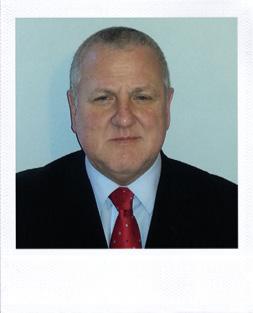 THE WORKPLACE SOLUTIONS EXPERT’S VIEW
THE WORKPLACE SOLUTIONS EXPERT’S VIEW
ANDY SERGEANT,
EXECUTIVE DIRECTOR, (INCENDIUM) THE INSTANT GROUP
It’s been well documented that a whole-life asset management approach to a building’s maintenance and management can drive long term value, reducing operational liabilities and costs. But as more and more occupiers move towards flex space, the onus shifts onto the operator community to incorporate long term operational efficiency and effectiveness into their offerings.
These trends are significant not just for the here and now but have implications for the whole asset life cycle. The increasing adoption of flex presents several important challenges and considerations for both operators and their occupiers.
The first of these comes during the initial fit-out stage. Because companies are, in our experience, increasingly signing up to shorter and shorter leases, it’s important that landlords and operators consider how these solutions might prove sustainable during the whole-life cycle of the asset.
This involves incorporating design solutions that can accommodate alternative approaches to configuration and operation as well as materials that can be reused or recycled to reduce waste. The adoption of circular economy principles here is key.
Once fitted out, operators are responsible for the full cost of operating the space. Occupiers pay a single monthly fee which covers all operational expenses including maintenance, servicing, utilities and any other day-to-day consumables. The burden is therefore on the operators to provide a carefully curated experience that exceeds occupier expectations to maintain high occupancy levels whilst at the same time keeping a robust focus on operational costs. This tension should drive the holistic approach required to ensure facilities are energy efficient, easily maintainable, safe and sustainable over the long-term life of the asset.
Although in this environment there is still scope for inefficiency on the occupier side, flex space is inherently more sustainable than the traditional office. As organisations adapt working patterns and space needs by leveraging flexible space over time, they are typically able to reduce their total space usage, and therefore lower their net emissions and overall consumption patterns.
Larger organisations who retain core long-term hub space while adopting flex as variable capacity or satellite offices will need to consider the level of infrastructure investments that are appropriate for both. For example, the location of high-cost facilities like staff canteens, gyms, specialist labs or client entertainment facilities will be better suited to long-term hubs.
To ensure ongoing adoption of this model, it’s important that operators keep innovating to respond to a rapidly changing marketplace, curating their offerings accordingly. Typically location, price and terms are key criteria that drive selection, but also important are the look and feel, the extent of on site and nearby services and the focus of curated experience. The ability for assets to respond and adapt to changes in these criteria is essential in ensuring an efficient whole-life approach for the asset.
Finally, with 80 per cent of landlords predicting adoption of greater lease flexibility and agility over the next five years, according to recent joint research by The Instant Group and the Urban Land Institute, it is becoming essential that landlords and their asset managers continually reassess their investment decisions. Particularly, whether the assets they are bringing to market will adapt or facilitate flex leasing strategies and enable flex operators to adopt a whole-life cost approach to the operation and delivery of their services. This becomes even more important as the landlord community put skin in the game by partnering with flex operators to bring their own white label or branded flex solutions to market.
 THE CLEANING SPECIALIST’S VIEW
THE CLEANING SPECIALIST’S VIEW
JOHN BRILL,
SALES DIRECTOR NILFISK
Facilities management is having to adjust to an increasingly competitive and changing environment. Rising cost pressures, acute labour shortages and the transformation of workplace environments as employees pivot to remote working and organisations opt for smaller, cheaper out-of-city premises, mean cleaning service operations need to ensure efficiencies centred on expenditure, delivery and resourcing are always optimised.
Facilities management is not immune to the broad impact of the cost pressures all businesses are currently experiencing. Companies are mindful of the need to focus on value for money in all areas. As a result, facility or cleaning managers need to elevate best practice and look for efficiency improvements. Such pressures place even greater importance on informed decision-making.
One way to ensure necessary cleaning services and strong outcomes are underpinned is to address the strategy behind equipment investment and utilisation and how to use it to generate tangible worth.
The term ‘sweating assets’ is a familiar refrain for many organisations which may not have the financial headroom to invest in new capital expenditure. To offset cost pressures and maintain service standards, the ability to make machines run as long and as efficiently as possible can be both a strategic and practical answer for success in today’s competitive landscape.
Organisations looking to optimise their cleaning operations, but mindful of the cost and labour issues they face, should examine access to incremental efficiency gains across their cleaning responsibilities, including how they maintain or replace current machines investment.
Ensuring that cleaning machines are fully functional for optimum time periods can go a long way to driving productivity levels and utilising workforce availability. This is particularly important for in-house teams where enhanced cleaning time performance can lead to the freeing up of resources that can deal with other important tasks, in addition to the cleaning regimes.
But if machinery is forced out of action, having a strategic backup plan can help mitigate the impact of downtime and ensure that staff can be effectively deployed at all times. In such instances, it is imperative that the machine is repaired without undue delay and, where necessary, replacement assets are adeptly employed.
To assist in building better resilience, the smart strategic answer is to partner with a manufacturer and establish a guaranteed service agreement; one that covers an organisation’s entire cleaning machine fleet through a single source contract, and which offers certainty, expertise, and value over the long term.
Such contracts promise the practical benefits of asset replacement without delay and create peace of mind thanks to regular maintenance oversight that drastically improves equipment performance and diminishes instances of unwanted and costly asset downtime.
More than ever, facility managers and contract cleaning companies are seeking ways to work smarter to derive the best value from the equipment and resources they rely upon. Flexible service agreements open a pathway to consistently maintained cleaning assets that work for longer, as well as better control of costs and higher levels of machine availability to underscore staff productivity. Together, they can make a real difference to market competitiveness and future commercial success.





